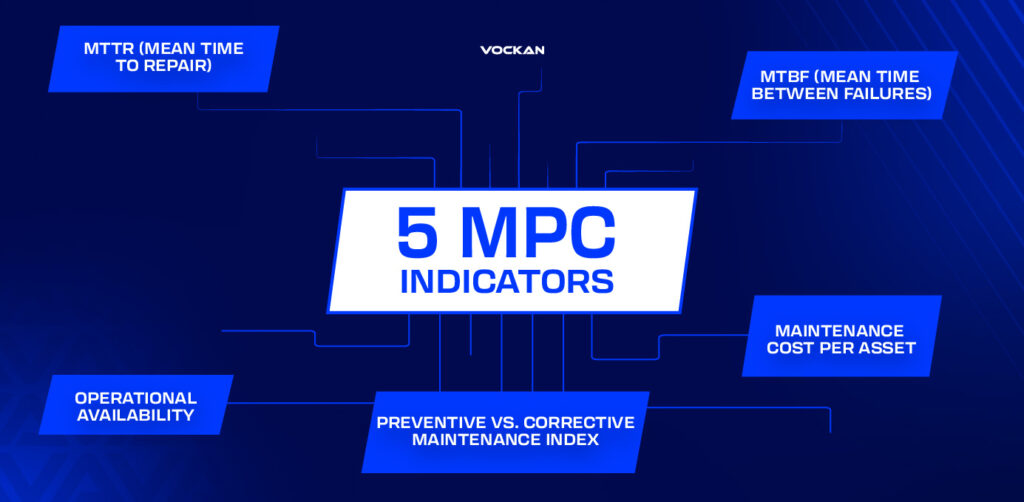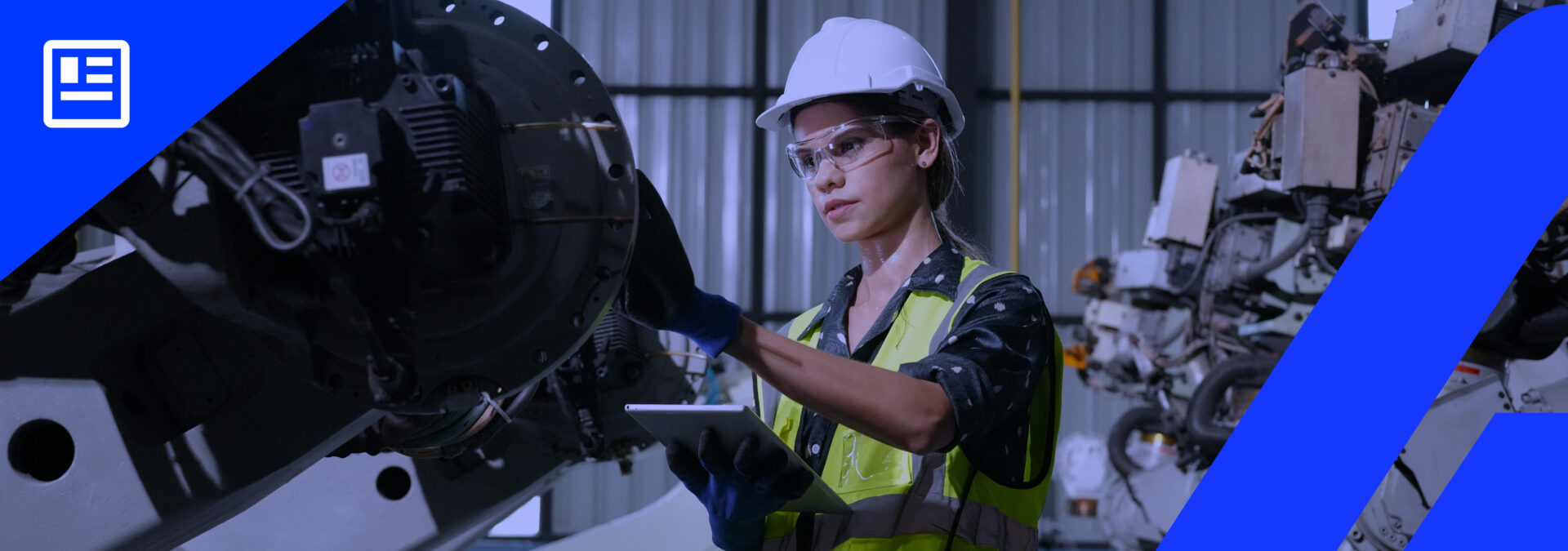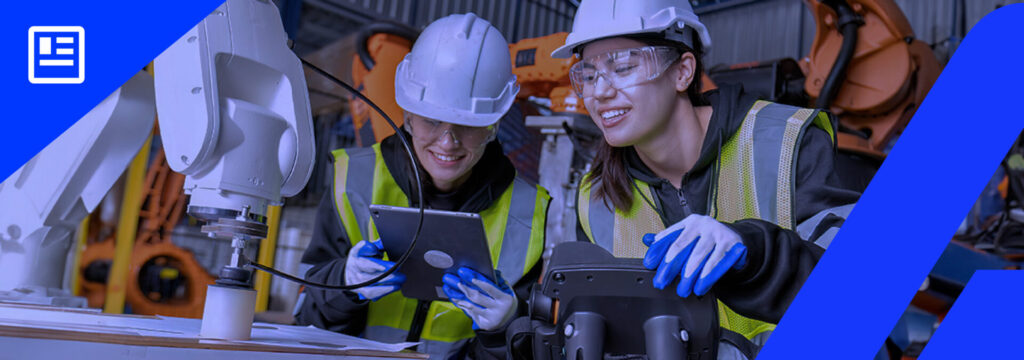With each machine shutdown, an industry loses production, deadlines and money.
That is why high-performance companies adopt MPC to anticipate failures and ensure total control of maintenance.
Ensuring high availability and avoiding unplanned shutdowns of critical equipment is not just a technical issue — it is a strategic necessity.
In this scenario, MPC (Maintenance Planning and Control) emerges as a fundamental ally to ensure that maintenance occurs according to schedule and that unexpected failures are avoided.
In this article, you will better understand the role of MPC and how it can transform maintenance management in practice. Enjoy reading!
WHAT IS MPC?
Maintenance Planning and Control (MPC) is a strategic approach focused on industrial maintenance management. Its objective is to anticipate failures, reduce the emergency use of parts, reschedule labor based on the criticality of assets and prioritize equipment with the greatest impact on production.
More than just “optimizing resources,” MPC ensures that maintenance occurs at the right time, with the least possible impact on operations.
In practice, planning defines what should be done, when, and how — taking into account factors such as failure history, equipment criticality, and resource availability.
Control, on the other hand, monitors execution, collects data, and analyzes indicators, ensuring that the plan is followed and continually adjusted.
More than an operational function, MPC helps reduce recurring failures, extend the useful life of assets, and support investment decisions. It is, therefore, one of the pillars of the culture of continuous improvement in industry.
According to Walter Braz, QAD Certified Senior Consultant in Manufacturing and EAM (Enterprise Asset Management):
“MPC is responsible for scheduling, planning, controlling, and analyzing all maintenance activities in a company, ensuring that assets and equipment operate efficiently, safely, and for as long as possible, at the lowest cost.”
WHY IS MPC IMPORTANT FOR INDUSTRIES?
In an industrial environment, operational efficiency is linked to the reliability of equipment and the continuity of production processes.
Any unexpected failure can result in losses, whether due to unplanned shutdowns, rework, waste of raw materials or delays in deliveries.
It is in this context that Maintenance Planning and Control becomes essential for the industrial sector.
MPC allows maintenance activities to be planned, preventive and strategic.
With this, companies can reduce costs with unplanned maintenance and optimize the use of resources.
The Brazilian Machinery and Equipment Industry Association states that “one of the main aspects that has the greatest influence on the growth of an industry is the use of a maintenance strategy, since it can directly affect the company’s production and profit”.
In addition, MPC provides data and indicators that support more assertive decision-making, promoting more effective management.
It also ensures that equipment operates within safe parameters, reducing the risk of mechanical failures and accidents by ensuring that equipment operates within ideal standards and favoring compliance with quality standards and certifications.
In this way, MPC is an indispensable tool for making maintenance an area oriented towards indicators (MTBF, MTTR) and linked to production and availability objectives, capable of generating value and greater competitiveness.

Read also: Capacity Requirement Planning: What It Is and 7 Tips to Increase Efficiency
WHAT ARE THE TYPES OF MAINTENANCE?
In industrial management, maintenance is essential to ensure good equipment performance and continuity of production processes.
There are three main types of maintenance, each with specific characteristics and objectives. Check out the explanatory table we have prepared to help your company:
| Types of maintenance | When is it performed? | Objective |
| Corrective | After a failure or breakdown of equipment occurs | Restore the asset to normal operation, whether through repairs, replacements or adjustments |
| Preventive | Before failure occurs, based on a pre-established schedule | Perform inspections, part replacements and adjustments based on usage time or standards defined by manufacturers |
| Predictive | It is based on the actual condition of the equipment, using sensors, measurements and analysis to identify signs of wear | Intervene only when there is evidence that something is out of the ordinary, based on the information collected |
Each type of maintenance has its role within the industry.
Ideally, they should be combined within a plan, according to the criticality of the assets, the objectives and the available resources.
How to Perform MPC in Industry: 6 Steps
Performing Maintenance Planning and Control involves structuring processes and tools that ensure that the maintenance of equipment and facilities is efficient.
Below is a guide on how your industry can perform a MPC:
- Asset survey
Identify and catalog all equipment, machines, tools and systems that require maintenance.
- Asset classification and criticality
Evaluate which assets are most important for the company’s operation, and prioritize their maintenance.
Use criteria of impact on production and safety, in addition to the cost of downtime.
- Maintenance history
Gather data from previous maintenance, this helps to identify failure patterns and opportunities for improvement.
- Scheduling and Execution
Organize the maintenance schedule so that it is performed at the right time, with the right resources.
- Control and Records
Record everything that was done during maintenance, to generate history and control, this helps to create reliable data for analysis of failures and indicators.
- Continuous Analysis and Improvement
Use the indicators to identify repetitive failures and opportunities for improvement.
This way, your company will be able to reduce failures, increase the useful life of assets and reduce costs.
5 MPC INDICATORS
KPIs are essential in Maintenance Planning and Control because they help measure performance, identify bottlenecks and guide strategic decisions.
Below, we list the main KPIs to help manage maintenance in your industry:
MTTR (Mean Time to Repair)
Indicates the average time required to correct a failure and restore the equipment.
Therefore, the lower the MTTR, the more efficient the maintenance team.
MTBF (Mean Time Between Failures)
Measures the average operating time of a piece of equipment until a failure occurs, that is, the higher the MTBF, the better the reliability.
Operational Availability
Shows the percentage of time that a piece of equipment is available to operate, considering failures and maintenance.
It is an indicator that combines MTBF and MTTR, having a broader view.
Preventive vs. Corrective Maintenance Index
Shows the proportion between planned and unplanned maintenance in the industry.
The higher the preventive percentage, the better the control and predictability.
Maintenance Cost per Asset
Assesses how much is being invested in maintenance in relation to the importance or value of the asset or production.
It is widely used to control expenses and justify investments.
5 Benefits of MPC for Industrial Maintenance

MPC brings a series of benefits to industries, both operational and strategic.
According to the article published by ABIMAQ, “it is estimated that companies that invest in industrial solutions, such as machine maintenance, have an 18% higher productivity over a 5-year period”.
Walter Braz states that “the company’s planning becomes more realistic, working to maintain the machine’s productivity level, in addition to having more accurate information to make decisions at the right time”.
Understand below the main benefits provided to industries:
Reduction of unplanned downtime
MPC allows you to anticipate failures and organize maintenance, avoiding unexpected breakdowns that interrupt production.
This reduces the impact of unforeseen events and improves operational continuity.
Improved productivity
Equipment operating in good conditions increases the utilization rate and reduces setup and downtime times.
Furthermore, with fewer downtimes and rework, the team can focus on other activities.
Optimization of resource use
Helps to better plan the use of labor, tools and spare parts, avoiding waste, such as reducing rework and minimizing downtime in production, emergency purchases and unnecessary use of materials.
Greater safety in the workplace
Poorly maintained equipment poses risks to operators.
In this way, MPC helps to keep machines in good condition, reducing accidents and ensuring compliance with safety standards.
More strategic decision-making
With the use of performance indicators, maintenance ceases to be an operational area and takes on a strategic role.
Therefore, the team can analyze trends and prioritize actions based on concrete information.

Read also: Inventory Control: Methods and Technologies to Reduce Costs and Increase Efficiency
Do you want to increase the efficiency of your industry with more technology and agility?
QAD Redzone connects machine sensors to maintenance planning, transforming MPC into a digital, visual and data-based routine.
You monitor indicators such as MTTR and operational availability in real time, standardize corrective actions and engage the maintenance team with a focus on continuous improvement.
With RedZone, your industry reduces unexpected downtime, avoids rework and makes decisions based on facts — not guesswork.
Talk to a Vockan specialist and find out how RedZone can help your industry.










